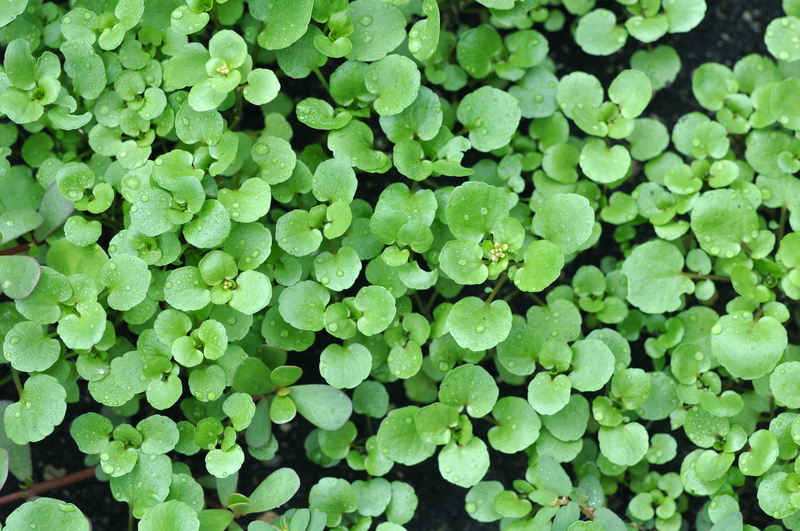Tried-and-True Methods to Say Goodbye to Tree Stumps
Tree stumps are a familiar sight in many gardens and yards, particularly after the removal of unhealthy or dangerous trees. While some homeowners may opt to leave old stumps in place, doing so can cause a range of issues, from unsightly landscapes to pest infestations and even regrowth problems. Fortunately, there are several effective and reliable methods to eliminate unwanted tree stumps and reclaim your beautiful outdoor space. In this comprehensive guide, we'll explore the best ways to get rid of tree stumps for good, helping you choose the right method for your needs.
Why Remove Old Tree Stumps?
Before delving into the tried-and-true methods for stump removal, it's important to understand why it's beneficial to remove tree stumps from your yard:
- Pest Control: Decaying stumps attract termites, ants, beetles, and other wood-boring pests.
- Prevent Regrowth: Many tree species can regrow from the stump, causing additional maintenance.
- Safety: Stumps pose a tripping hazard, especially for children and pets.
- Aesthetic Appeal: Old stumps detract from the overall look of your landscape.
- Landscaping Flexibility: Removing stumps frees up space for new planting, lawn expansion, or patios.

Classic Approaches to Tree Stump Removal
There is no "one size fits all" solution when it comes to eliminating tree stumps. Depending on the size of the stump, its location, and your physical ability or budget, you might prefer a mechanical, chemical, or natural approach. Below are some of the best stump removal strategies used by homeowners and professionals alike.
Manual Tree Stump Removal
For smaller stumps or those with a shallow root system, removing the stump by hand is a feasible option. This traditional method is effective but can be labor intensive.
- Preparation: Use a shovel or mattock to dig around the base, exposing roots.
- Cut Roots: Employ an axe, root saw, or loppers to sever larger roots.
- Leverage: Utilize a digging bar or pry bar to loosen the stump from the ground.
- Pull Out Stump: With most roots severed, rock the stump back and forth until you can lift it out of the hole.
This method works best for smaller tree stumps or shrubs but may not be practical for larger trees with extensive, deep root systems.
Stump Grinding: The Professional Solution
When manual labor isn't practical, stump grinding is considered one of the fastest and most efficient ways to eradicate tree stumps. It requires specialized machinery - a stump grinder - that essentially shreds the stump into wood chips and sawdust.
- How It Works: The grinder's rotating blade cuts away layers of wood, reducing the stump and some roots to ground level or below.
- Advantages: Quick, effective, and leaves the area ready for replanting or sod.
- DIY or Professional: You can rent a grinder for DIY use, but professionals will accomplish the job safely and efficiently, particularly for large or awkwardly placed stumps.
Stump grinding is particularly useful for large or multiple stumps, minimizing the risk of regrowth and eliminating tripping hazards.
Chemical Stump Removal
If you're searching for a lower-effort, low-cost method, chemical stump removal is another tried-and-true option. The process relies on decomposition accelerators that speed up the natural decay of wood, eventually rendering the stump soft and easy to break apart.
- Step 1: Drill holes into the surface and sides of the stump, penetrating as deeply as possible.
- Step 2: Pour a commercial stump remover or potassium nitrate crystals into the holes.
- Step 3: Add water to activate the chemicals as directed by the product instructions.
- Step 4: Wait several weeks or months for the stump to become soft and spongy; then break it apart with an axe or shovel.
This method is best for patients and non-urgent removals, as it takes time and is not suitable for stumps in play areas or where pets roam due to the chemicals involved.
Natural and Eco-Friendly Stump Elimination Techniques
Many homeowners today are interested in green solutions for their landscaping needs. There are several natural alternatives to harsh chemicals or heavy machinery when you want to say goodbye to old tree stumps while respecting the environment.
Physical Decay Through Composting
You can encourage the natural decomposition of the tree stump by leveraging organic materials to promote fungal and microbial activity. Here's how:
- Cover the Stump: Pile rich organic materials such as compost, mulch, or manure over and around the stump.
- Moisture: Keep the area damp, as bacteria and fungi thrive in moist environments.
- Monitor Progress: The process can take anywhere from a few months to a few years, depending on the stump size and wood density.
This environmentally friendly method is entirely safe and can be accelerated by drilling holes in the stump and filling with compost to invite colonization by decay organisms.
Epsom Salt Method
Epsom salt (magnesium sulfate) can be used as a non-toxic alternative to chemical stump removers. It dehydrates the stump, making it easier to break down.
- Preparation: Drill holes into the stump just as you would for chemical treatments.
- Application: Fill the holes with Epsom salt and add water.
- Repeat: Cover the stump with a tarp to retain moisture and repeat the process every few weeks.
This is a slow but safe way to help rot the wood, and it won't harm the surrounding soil or plants.
Burning Out Tree Stumps: Traditional But Cautious
Another time-honored method for stump destruction involves controlled burning. While not permitted in all areas due to local regulations and fire risk, it's still popular in rural settings.
- Drill Holes: Begin by boring deep holes into the stump to increase airflow.
- Add Fuel: Pour kerosene or charcoal into the holes (never use gasoline for safety reasons).
- Ignite: After soaking for a few days, light the fuel and monitor the burn closely.
- Aftercare: Once cooled, remove the ashes and remaining wood.
Important: Always check local laws and fire ordinances before attempting stump burning, and observe every safety precaution.
Using Machinery to Uproot Stumps
If you have access to heavy equipment, such as a backhoe or skid steer, mechanically uprooting the stump is a viable but heavy-duty approach. This method is mainly used for large stumps or construction projects, and is usually best left to professionals due to the risk of soil disturbance or property damage.
- Dig Around Stump: Loosen soil and expose major roots.
- Lift Out: Use machinery to break roots and lift the stump clear of the ground.
- Fill the Pit: Backfill the hole with soil, compacting as you go to avoid settling.
This is a rapid and effective method but is often more expensive and can disturb a larger area of your yard than grinding or hand removal.
Preventing Stump Regrowth
Some trees, such as willows, poplars, and maples, are notorious for suckering and producing new shoots from the stump or roots after being cut down. To ensure your stump removal efforts are successful:
- Cut Flush: Cut the stump as close to ground level as possible.
- Use a Stump Killer: Immediately apply a nonselective herbicide or a salt solution to the fresh cut surface as per label directions.
- Monitor for Suckers: Remove any new shoots promptly to starve the root system.
Combining mechanical and chemical/natural methods can be the most reliable solution for persistent tree stumps.
Factors to Consider When Choosing a Stump Removal Method
There is no universally "best" technique. Homeowners should consider several factors when determining the ideal tree stump removal solution:
- Stump Size: Large, old stumps may require grinding, machinery, or professional services.
- Tree Species: Hardwoods decompose slower than softwoods.
- Budget: Manual or natural methods are inexpensive; grinding or machinery increases cost.
- Equipment: Do you have access to the needed tools or machines?
- Timeframe: Do you need rapid removal, or can you wait several months?
- Environmental Concerns: Chemical vs. organic, local regulations and safety.
Aftercare: What to Do Once the Stump Is Gone
Removing a tree stump will leave a depression in your yard, which requires some simple aftercare:
- Fill the Hole: Use topsoil or a compost-soil mix to backfill the gap.
- Level and Compact: Carefully pack down the soil to prevent settling.
- Replant or Reseed: Consider planting grass, flowers, shrubs, or even a new tree in the area.
- Monitor: Watch for signs of regrowth or sinkage, and make adjustments as necessary.

Frequently Asked Questions on Tree Stump Removal
Is it necessary to remove every tree stump?
While not required, it is generally advisable to remove stumps for aesthetic, safety, and practical reasons. Certain larger stumps may be left in less-trafficked naturalized areas if desired.
Can I use the leftover wood chips from grinding?
Absolutely! Wood chips can be used as mulch, compost material, or for garden paths. Just be mindful if the stump was diseased, as you may want to dispose of those chips instead.
How much does professional stump removal cost?
Costs vary based on stump size, location, and local rates. On average, stump grinding by a professional typically ranges from $100 to $400 per stump. Manual or chemical options are often less expensive but more labor-intensive.
Are there any eco-friendly commercial stump removers?
Yes, some products use natural ingredients (like high-nitrogen compounds) to speed decomposition. Always read labels and choose options safe for pets, children, and nearby plants.
Conclusion: Your Path to a Stump-Free Yard
Whether you need to remove a troublesome tree stump for landscaping projects, safety, or cosmetic reasons, there are a range of time-tested methods available. From swinging an axe to renting a grinder, or letting nature do the work, you can confidently choose the approach that best fits your timeline, budget, and environmental values.
Say goodbye to unsightly tree stumps once and for all. With a little patience and effort, your yard will not only be safer and more attractive but also more functional - ready for whatever new possibilities you can imagine!
Ready to bid farewell to stubborn stumps? Use these expert-approved techniques and reclaim a healthy, beautiful yard today!